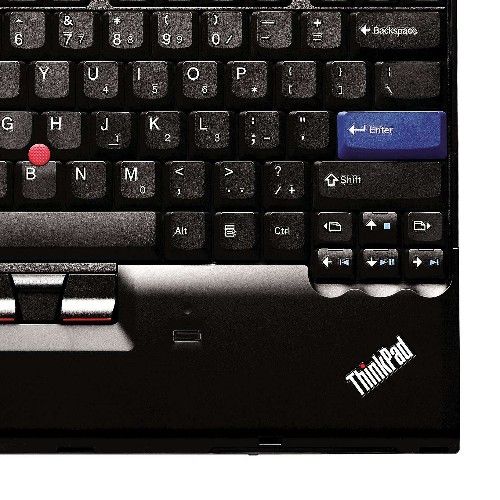Lenovo’s ThinkPad range carries with it the expectation of quality, reliability and excellent usability. The ThinkPad X200 continues this trend, and is similar in style to the larger X300.
Our quick take
The ThinkPad X200 is a great tool for the business user on the move. What it lacks in style it more than makes up for in quality, with no need to shout about its abilities. It’s also a much cheaper alternative to the larger ThinkPad X300.
If you don’t mind leaving the optical drive at home, it’s well worth a look. The outstanding keyboard, impressive battery life and great mobility particularly impressed.

Lenovo ThinkPad X200 notebook - 4.0 / 5
| FOR | AGAINST |
|---|---|
|
|
Prices at under £1300, it’s a more mainstream choice, and it’s the first 12.1-inch laptop we’ve seen in the ThinkPad range to feature a 16:10 aspect ratio. The display offers a standard WXGA resolution. Some corporate users will inevitably complain - preferring the 4:3 aspect ratio for taller spreadsheet use, but we found the extra width a boon, finally allowing us to fit two documents side by side.
Image quality is more than reasonable; it’s not the most vibrant panel we’ve seen, but it does offer accurate colour reproduction, and the matt finish is excellent at suppressing reflections. Greasy fingerprints are also well-contained.
Predictably, graphics are handled by an integrated Intel GMA 4500MHD chip, offering reasonable performance and battery life. It lags a long way behind the latest Nvidia GeForce 9400M chipset found in Apple’s new MacBook in performance terms, but unless you need to carry out extensive Photoshop work or heavy video editing it’ll be fine for most uses. We also managed to get an excellent 6.5 hours of use away from a power point.
The X200 is a highly portable machine, weighing in at 1.6kg, but the low weight has been achieved at the expense of the optical drive. You won’t be able to watch films on the move then, but a docking station is included in the price. Within this you’ll find an external DVD drive, offering a useful compromise between mobility and features. The UltraBase docking station also offers four extra USB ports, but it’s a shame there’s no digital display output.
You’ll find three USB ports, VGA, an ExpressCard 54 slot and a card reader on the sides of the X200’s chassis. The rear of the machine is bereft of ports, the space used instead by the battery. Networking is to the fore, with 802.11n Wi-Fi in place, along with Gigabit Ethernet.
Internet use is also catered for when on the move, thanks to integrated 3G/HSDPA. The SIM card is accessed from behind the battery, and a 30-day broadband trial with Vodafone comes as standard. It’s not locked to this network provider, however, so you’ll be able to choose a tariff that best suits your needs.
The quality of the chassis is truly astounding, proving a robust and comfortable choice for the daily commute. The chassis features a tough magnesium alloy structure, and it’s also used inside the display surround. Metal hinges hold the screen firmly in place, and there was little flex from the system when pressure was applied. Unlike most modern laptops, a matt finish is applied to the chassis, which helps to hide scuffs and scratches.
The keyboard is spill-resistant, and in addition to foiling carnage with spilled drinks, it’s a board that proved beyond criticism, offering large and well-spaced keys. They move near silently, and a well-judged amount of travel makes this one of the most comfortable ultraportables we’ve seen. Despite having loads of space under the keyboard, Lenovo has elected to use a pointing stick over a touchpad, which won’t suit all users. It’s precise and responsive, but it’s not ideal when trying to highlight text.
Where some manufacturers fit ULV processors in their ultraportables, this ThinkPad has a fully-featured Intel Core 2 Duo P8400 chip in place. The 2048MB of memory is a little disappointing at this price point, but it’s still a more than able companion when multi-tasking. We found applications loaded smoothly, and it suffered from few issues during our time with the machine.
In order to cut costs, the X300’s SSD drive has been abandoned, and the X200 uses a traditional hard drive. Storage space benefits as a result, with 250GB to store your files, photographs and music collections on.
To recap
A lightweight ultraportable offering bullet-proof build quality, but there’s no built-in optical drive
